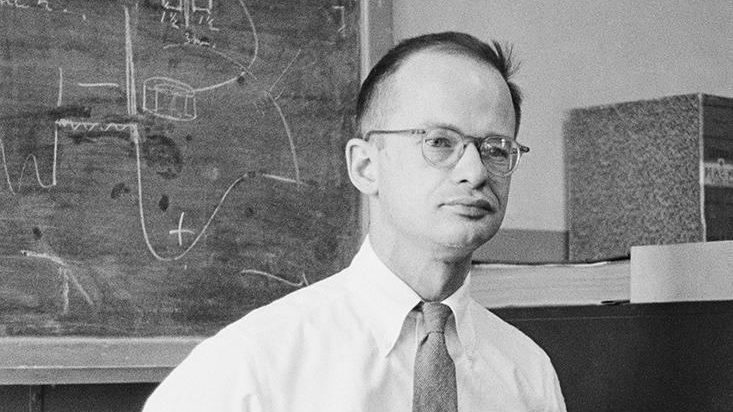NY Times on “Pushy” Atheists and The Strategic Blunder of Inviting PZ Myers to Speak

At the NY Times today, beliefs correspondent Mark Oppenheimer reports on last week’s Council for Secular Humanism conference in Los Angeles. His article discusses the infighting within the movement. As I wrote last week, at issue is how secular humanists and atheists should participate as citizens in society.
On one side, “accommodationists” argue that non-believers should build bridges with others around shared values in order to work on common problems such as climate change and failing schools. On the other side, “confrontationalists” argue that they should close ranks and engage in relentless attack and ridicule against all forms of religion, a Holy Grail pursuit to eliminate religious faith from the world.
Today’s article at the Times is Oppenheimer’s second report this month on the humanist movement. Two weeks ago he profiled the philosopher Paul Kurtz, the ousted founder of the Council for Secular Humanism and its umbrella organization The Center for Inquiry, and the long-time intellectual leader of the movement. In the article and elsewhere, Kurtz has warned that the movement has turned in a dangerous direction away from a vision of productive citizenship towards becoming a movement that rests entirely on attention grabbing ridicule and attacks.
The New Face of a Movement?
Oppenheimer’s article provides evidence for these fears. His report describes a panel at the event featuring the accommodationist Chris Mooney, a science journalist and blogger, and the confrontationalist PZ Myers, a bomb-throwing blogger and biology professor at the University of Minnesota-Morris. Myers, somewhat predictably, provides Oppenheimer the most memorable and dramatic fodder for the article.
Most notably, Myers calls NIH chief and genome-mapper Francis Collins “a clown. “ As the biology teacher explains of the religious Collins: ““When it comes to the way he’s thinking about science, everything I’ve read that he’s written has been complete garbage.”
Retired University of Colorado physics instructor Victor Stenger, another confrontationalist on the panel, is described as calling accommodationists cowards. “It’s time for secularists to stop sucking up to Christians and other religious people,” he told the NY Times.
Oppenheimer ends the article by describing Myers as a proud, out-of-the-closet atheist who is providing inspiration to non-believers: “We’re here, he’s saying. And we don’t believe. And we have science and reason on our side. Get used to it.”
The Council for Secular Humanism—and its parent organization the Center for Inquiry— erred considerably in giving Myers a forum. His appearance and remarks have gained news attention, but at what price?
This is not about censoring Myers, but about making wise choices relative to the public image of the organization and the future of the movement. There will always be a need for iconoclasts and pundits such as Myers who exceed the boundaries of civil discourse and who grab attention by saying foolish and embarrassing things. But that doesn’t mean that major organizations should affiliate with him by making his remarks the news that comes to define their annual meetings.
An Intellectual Movement Slow to Embrace New Media
As a blogger, Myers has little to be accountable for or to. He has no agenda for accomplishing policy goals as the Center for Inquiry has through its Washington, DC office. His preferred medium and style is one that is contrary to the development and cultivation of serious ideas and brokering diverse ties, and instead rewards uncivil discourse, echo chamber extremity, and ideological reinforcement.
As I discussed in a Big Think video interview earlier this year, the Center for Inquiry and its magazine Free Inquiry were relatively slow to invest in Web-based content and applications. This in part created a vacuum online and the opportunity for bloggers such as Myers to rise to global prominence and gain a following.
Now CFI seems all too eager to embrace Myers as an important new face and thought leader for the organization. Yet how far is the Center for Inquiry likely to get in working with Congressional offices or aspirational partners such as the AAAS or National Academies when their organization is defined at the NY Times by remarks from a blogger who calls the current NIH chief a “clown” and by a panelist who says its time to stop “sucking up” to religious people?
Misjudging the Millennial Generation
Associating with Myers also deeply misjudges what is needed to appeal to rising generations of Americans. The current thinking is that Myers and fellow confrontationalists such as Richard Dawkins are immensely popular on college campuses, drawing large audiences and crowds. Yet take a look at who turns out to these events and actively participates in campus atheist groups.
Instead of expanding the scope and diversity of people attracted to secular humanism, these figures are simply preaching to a still relatively homogeneous segment of overwhelmingly white, science and philosophy enthusiasts.
Much like the current appeal of the libertarian movement and Reason magazine, the sharp iconoclasm of Myers and others appeals to young people seeking something novel and anti-establishment, an outlook easily captured in a T-shirt and expressed as an identity by way of a label such as atheist. But as college students move into their late twenties and thirties, marry and start families, something more than entertaining, ideologically reinforcing attacks on religion are needed to sustain adult-level engagement.
Studies show that rising Millennials are skeptical or at least ambivalent about religion, but at the same time looking for a positive and inclusive message about values, tolerance, and collective action to solve problems. Among this generation, there is a deep commitment to tolerance, diversity, and public service.
A positive vision of secular humanism can capture and channel this ethos across the life course of a diverse segment of individuals, from college to old age. In contrast, the rhetoric offered by confrontationalists such as Myers is in many ways counter to this emerging preference among young people and to the need for a life-long philosophy, preaching instead intolerance while encouraging individualism and association among only like-minded others.
Young people are also deeply supportive of science, especially when science is connected to progress, a system of values and ethics, and the solving of social problems. Secular humanism can offer a positive message about science as progress. In contrast, confrontationalists tend to celebrate the “poetry of science” while simultaneously using it as a rhetorical bludgeon against religion.
Parallels Between the Humanist and Conservative Movements?
Imagine hypothetically for a moment the following scenario, one that when considered, I think adds light to the current debate within the secular humanist movement and the likely implications:
William F. Buckley is still alive. Yet staff at the National Review—the grand magazine that he built andthe forum that has fueled the rise of the conservative movement—have ousted him from the organization. There is a Rashomon-like range of interpretations for why this has occurred and who is at fault, but the result is that the magazine and the movement have lost much of their intellectual vision.
Still, though, the new leadership of the magazine believes that the conservative movement is stronger today than at any time in history, propelled by a new generation of conservative bomb-throwers who have risen to prominence not via the pages of the National Review but via the new media of talk radio, cable TV, blogging, and Facebook.
These media celebrities –including Sarah Palin, Ann Coulter, Glenn Beck, and Laura Ingraham—are invited to the magazine’s annual conference. The NY Times covers the event as do other major news organizations. The storyline is that the conservative movement is divided.
On one side are gentleman intellectuals in the Buckley tradition who argue for the need to offer a positive vision of conservative values that translate into a policy agenda designed to solve society’s problems and that has wider appeal to centrists.
On the other side are the conservative bomb throwers. They have little vision for the movement other than to claim that reason and the facts on their side. Instead their focus is on attacking liberals, secularists, and President Obama as their enemies.
In coverage of the national meeting at the NY Times and other major outlets, the focus is on Glenn Beck calling Obama a “communist clown” and Sarah Palin repeating Facebook posts in which she argues it is time to stop “sucking up to liberals.”
Your Thoughts on the Future of the Movement?
What do readers think? Are you concerned about the new face of the secular humanist movement? Do you see parallels to the decline of intellectual conservatism? Do you think it was a strategic blunder for the Council for Secular Humanism to invite Myers to speak?
See Also:
Social Progress vs. Endless War: Why do Atheists and Humanists Disagree?
Argument Culture: Why Atheists Score Higher on Religious Knowledge
Are Atheists Better at Blogging?
href="http://statcounter.com/free_hit_counter.html"
target="_blank">
src="http://c.statcounter.com/6310899/0/db700ba8/1/"
alt="customizable counter" >




